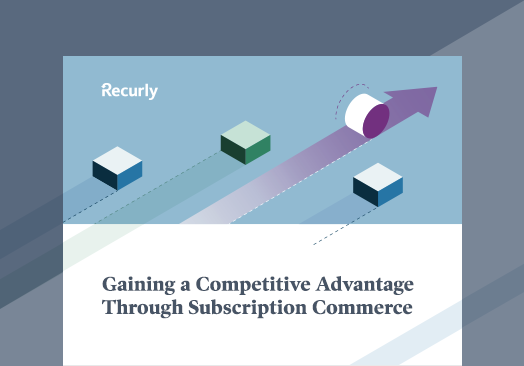Voluntary Churn
-%
Involuntary Churn
1.89%%
Different factors lead to different kinds of churn—each requiring a specific approach. Improving customer satisfaction reduces cancellations that result in voluntary churn while using decline management techniques minimizes payment declines that lead to involuntary churn.
KEY TAKEAWAYS
- B2B companies generally see lower median churn than their B2C counterparts. This can be attributed to the fact that many B2B products and services require a larger dollar point of entry and thus a lengthier and more thought out vetting process.
- B2B products are usually "stickier", as well, meaning it's more of a challenge to change platforms or providers.
- SaaS has the lowest median churn rate of any industry and Box of the Month has the highest.
- Involuntary churn (when a subscriber's payment attempt fails) tends to fall between 1.5-2% and Voluntary churn (when a subscriber decindes to cancel their subscription) is primarily between 3.5-7.5%.
Churn Rates by ARPC (Average Revenue per Customer)
Voluntary Churn
-%
Involuntary Churn
1.89%%
Price has an obvious effect on churn. Higher-priced subscriptions experience less churn, possibly because the purchase is more considered. Subscribers both sign up and cancel more readily in categories with lower price points.
KEY TAKEAWAYS
- Generally, the higher a business's ARPC (Average Revenue Per Customer), the lower the churn rates will be. This is especially true for B2B businesses.
- This may be because a high ARPC can be associated with enterprise software which often has 'inelastic' demand. In this case, the subscriber pays whatever price is set, often because the software is critical to operating their business.
- At the high end of ARPC, B2C businesses see an uptick in churn due to the higher sticker price on the subscription that subscribers are purchasing. If subscribers don't realize the value of the product or service, they can be more prone to churn.
Decline Rates (Recurring)
There are over 2,000 things that can go wrong with a credit card transaction: out-of-date or inaccurate card information, insufficient funds or temporary hold, gateway issues, and fraudulent activity, to name just a few. When payments are declined, subscription businesses can lose subscribers to involuntary churn. The better you understand why recurring payments are being declined, the more effective your decline management strategy can be, leading to higher MRR (Monthly Recurring Revenue).
Decline Rates by Industry
- Industry
- ARPC
Overall
Digital
Physical
Consumer Goods
Box of the Month
Consumer Services
Education
Healthcare
IoT
OTT
Publishing & Entertainment
SaaS
< $10
$10-$25
$25-50
$50-100
$100-250
> $250
KEY TAKEAWAYS
- Median Decline Rates are generally between 8-12%
- Industries that have more B2C merchants are likely to have a larger range of decline rates
- The top four decline reasons are all “soft” declines, which means that the transaction could not be processed at that time, however, it might be successful in the future if it is retried.
- As ARPC increases, Median Decline Rate tends to go down
Decline Reasons
Overall Decline Reasons
Generic Decline

Insufficient Funds

Temporary Hold

Restricted Card

Invalid Card Number

KEY TAKEAWAYS
- There is no variation between the top decline reasons by B2C / B2B and Overall
- B2C merchants usually receive more “Insufficient Funds” and “Temporary Hold” than B2B merchants. This could be explained by subscribers in the B2C segment having lower card credit limits than B2B subscribers.
Geographical Decline Reasons
The top 3 failure types are the same across all geographic regions but each region sees a unique combination of failure types for the 4th and 5th most prevalent.
North America
01Generic Decline
02Insufficient Funds
03Temporary Hold
04Restricted Card
05Invalid Card Number
Latin America
01Generic Decline
02Temporary Hold
03Insufficient Funds
04Expired Card
05Fraud Stolen Card
Europe, Middle East, Africa
01Generic Decline
02Temporary Hold
03Insufficient Funds
04Invalid Card Number
05Expired Card
Asia-Pacific
01Generic Decline
02Insufficient Funds
03Temporary Hold
04Authorization Expired
05Invalid Transaction
Recovery Rates
Recovery Rates by Decline Reasons
KEY TAKEAWAYS
- B2B businesses see a higher rate of recovery across the most common failure types. This could be due to the fact that many of these companies have dedicated customer teams that manually reach out to customers to update their billing information vs relying on automated emails and outreach to do it.
- Insufficient funds are the most likely top decline reason to be recovered. This is expected since most subscribers will replenish their card’s funds within several days of an “Insufficient Funds” notification, allowing the subsequent transaction to succeed.
Median Recovery Rates by Industry
- Industry
- ARPC
Overall
Consumer Goods
Box of the Month
Consumer Services
Business Services
Education
Healthcare
IoT
OTT
Publishing & Entertainment
SaaS
< $10
$10-$25
$25-50
$50-100
$100-250
> $250

